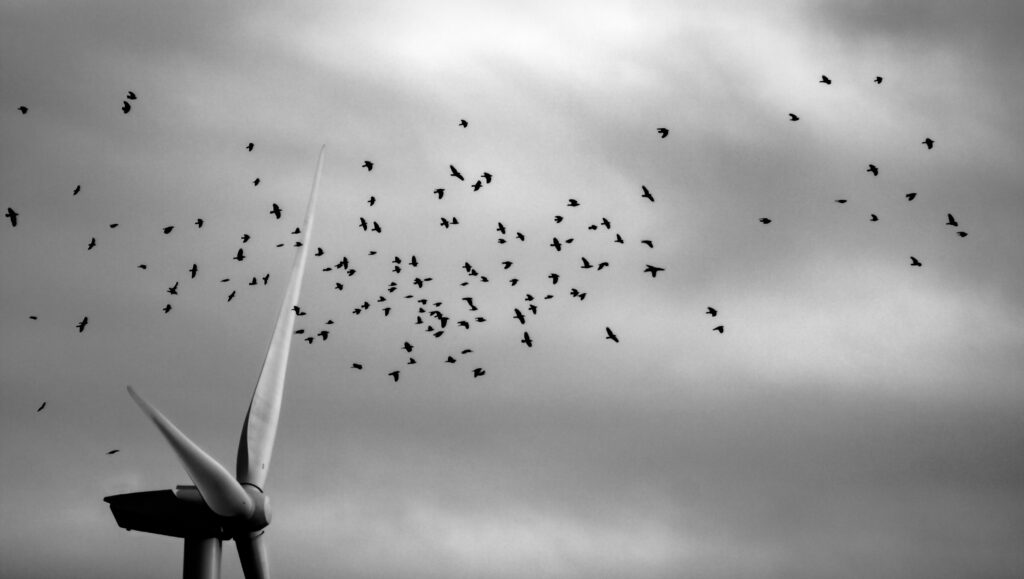I have written at length about the complicated relationship between wildlife conservation and renewable energy initiatives. As aligned as these two concepts may seem, they find themselves at odds with surprising frequency. Industrial-scale solar panels, for instance, may kill as many as 140,000 birds each year according to one 2016 study. Like shiny reflective windows that are responsible for massive numbers of annual bird collision deaths, large solar panels are mistaken for calm water, leading birds to plunge to their deaths onto their reflective surfaces.
Related Article: Nest Boxes Are Crucial to Cavity Nesting Birds in Deforested Areas
Green energy projects also tend to require a large amount of land. In situations where vanishing habitats are a concern, this “open” space can be crucial to the preservation of vulnerable wildlife. There is no easy solution to this issue, and wind farms often end up at the forefront of this difficult conversation.
Energy generated by wind farms is a renewable alternative to environmentally damaging fuel consumption. Unfortunately, they also represent a major hazard to many species of birds and bats. One study suggests that as many as 1.17 million birds are killed by wind turbines each year.
So, what can be done? A recent study demonstrates the importance of continued research in this area. The study analyzed the instances of carcass discoveries at a number of wind turbine sites. Based on the locations and times of these discoveries, they were able to determine which seasons represent the biggest spikes in collision deaths. The results are unsurprising, but no less promising.
For birds, carcass discoveries at wind turbines peak sharply during the fall and spring migration. For bats, which the study also followed closely, the period between summer and fall saw the most fatalities. Going forward, studies like this may allow us to develop future protections for birds and wildlife. If, for example, wind turbines were inactive during the migration season, the number of bird fatalities might be greatly reduced. This, of course, does nothing for the many non-migrant birds killed by wind turbines all year long. It may not be a solution, but it could be a start.
This would not be the first time such a restriction has been suggested for wind farms. Some farms have been asked to power off at night or avoid running during certain times to avoid causing unnecessary harm. Unfortunately, penalties for wind turbines killing native protected birds, such as Bald Eagles and Golden Eagles, seem to be softening. As the nation searches for an answer to renewable energy, serious drawbacks are being ignored.
Popular Article: Meet the Birds of Prey Keeping Gulls Under Control in Ocean City

